Mathematics Nur Intan Syazwani Binti Jamaludin Raja Noorliyana Binti Raja Almanan
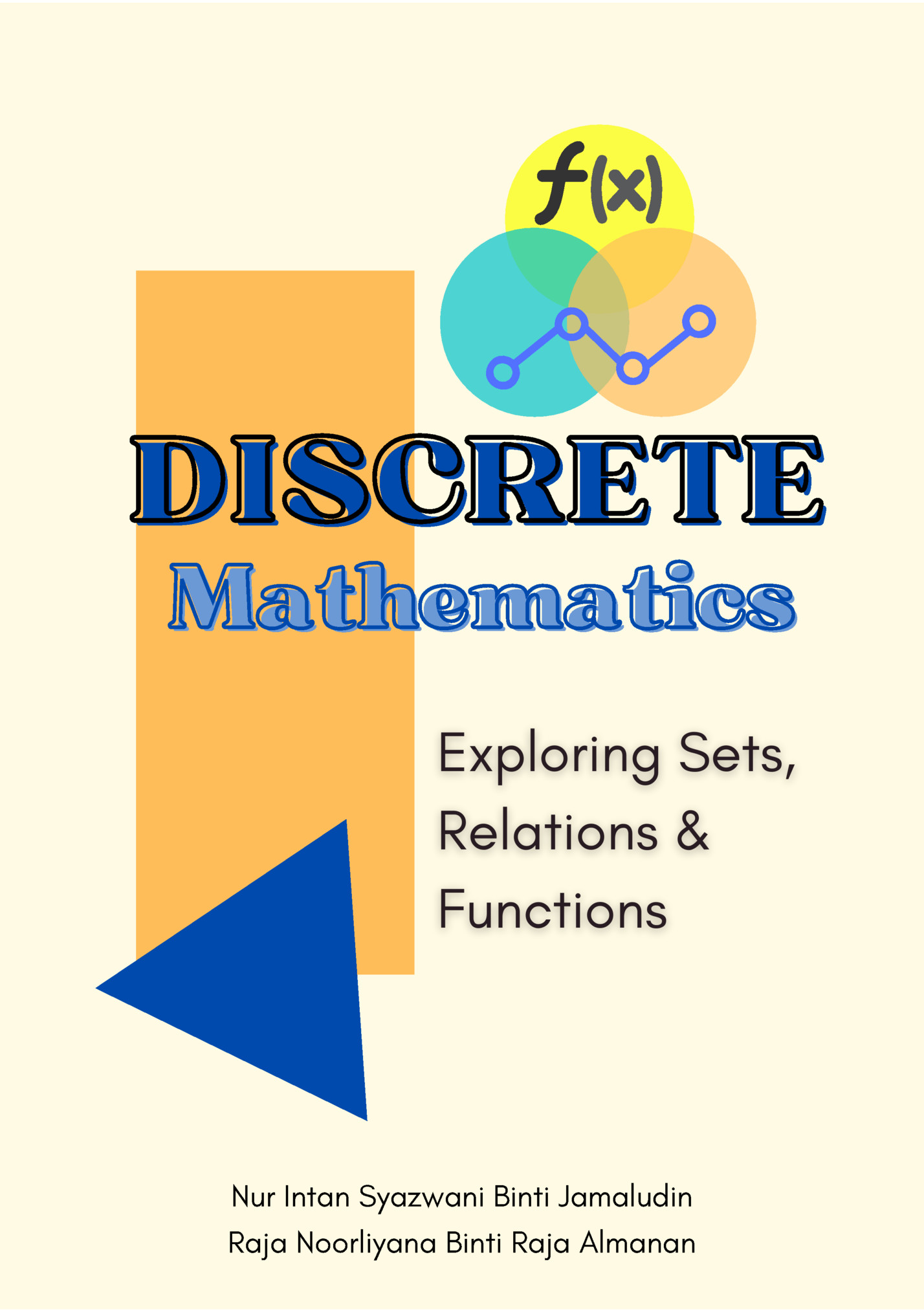
Nur Intan Syazwani Binti Jamaludin Raja Noorliyana Binti Raja Almanan Editor Nur Intan Syazwani Binti Jamaludin Department of Mathematics, Science and Computer Politeknik Tuanku Syed Sirajuddin

Publisher Department of Mathematics, Science and Computer, Politeknik Tuanku Syed Sirajuddin, Pauh Putra, 02600 Arau, Perlis Tel: 04-988 6200 Fax: 04-988 6300 http://www.ptss.edu.my/ Copyright © 2022 by Politeknik Tuanku Syed Sirajuddin All rights reserved. No part of this publication may be reproduced, stored in a retrieval system, or transmitted in any form or by any means, electronic, mechanical, photocopying, recording or otherwise, without the prior permission in writing from the Publisher. Discrete Mathematics Exploring Sets, Relations & Functions e ISBN 978-967-2258-83-4

guidance of many expert whose knowledge and skills have enhanced this book in many ways. For the valuable help, we thank you very much. Nur Intan Syazwani Binti Jamaludin Raja Noorliyana Binti Raja Almanan ii

and Functions is designed specially for Digital Technology students in polytechnics. It aims to boost their understanding of this related content area. The goal of this book is to be the student's special reference anywhere and anytime. It can also be practiced by individuals who can benefit from the content as basic concepts provided have been comprised of simple and understandable forms. Each chapter in this book is filled with diagrams, tips, compact notes and sample questions with solutions for quick references. Exercises given are completed with answers as guidelines. Hopefully, this book can stimulate students' interest in learning and become a catalyst for their success. iii

Appreciation ii Abstract iii Topic 1: Sets 1 Topic 2: Relations 26 Topic 3: Functions 39 References 56
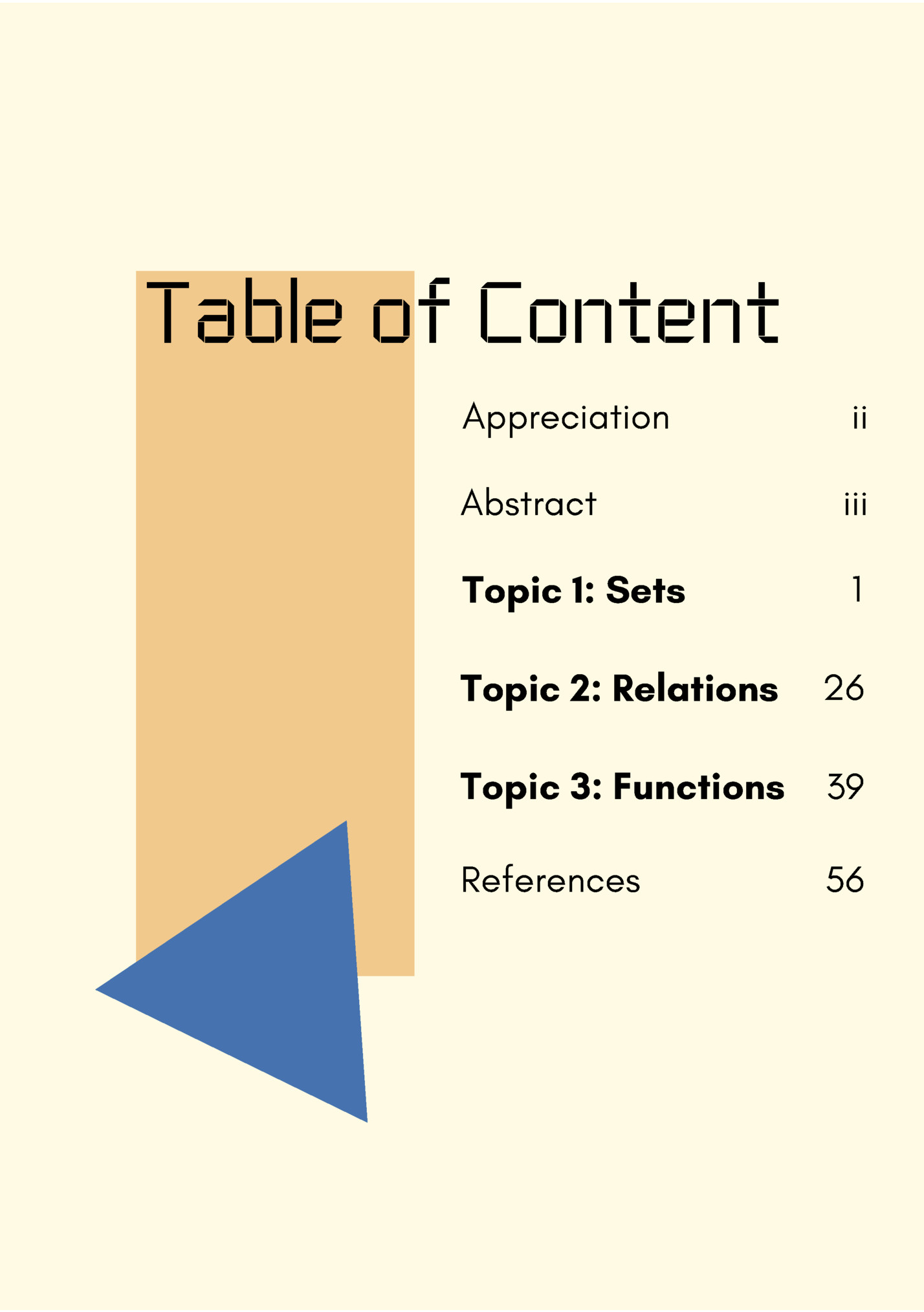
SETS SETS AND SET OPERATIONS 1.1 Basic Concept of Sets Terminology Set theory is a foundation of contemporary arithmetic, and is being used in official explanations. The concept of set is reserved as basic; therefore, we do not attempt to describe what a set is, but we can give an easy description, define significant properties of sets, and provide illustrations. All supplementary ideas of mathematics can be constructed based on the concept of set. Comparable but in casual arguments, sets also mentioned as collection, group, and aggregate. A set generally is a collection of objects known as the members or elements of that set. Let’s say, we have a set and we denote that some items that fit into this set are inside the set while items that do not fit into this set are not inside the set. A set is an abstract thing where its members do not necessarily have to be physically assembled mutually for them to create a set. Furthermore, we also state that sets contain their elements. For example, the set of trainees in an apartment; the list of alphabets in a word; or the set of real numbers. Thus, sets may be made up of elements of countless natures such as colour, people, physical objects, numbers, and signs. We will use the words object in an extensive method to comprise all these diverse types of items. 1
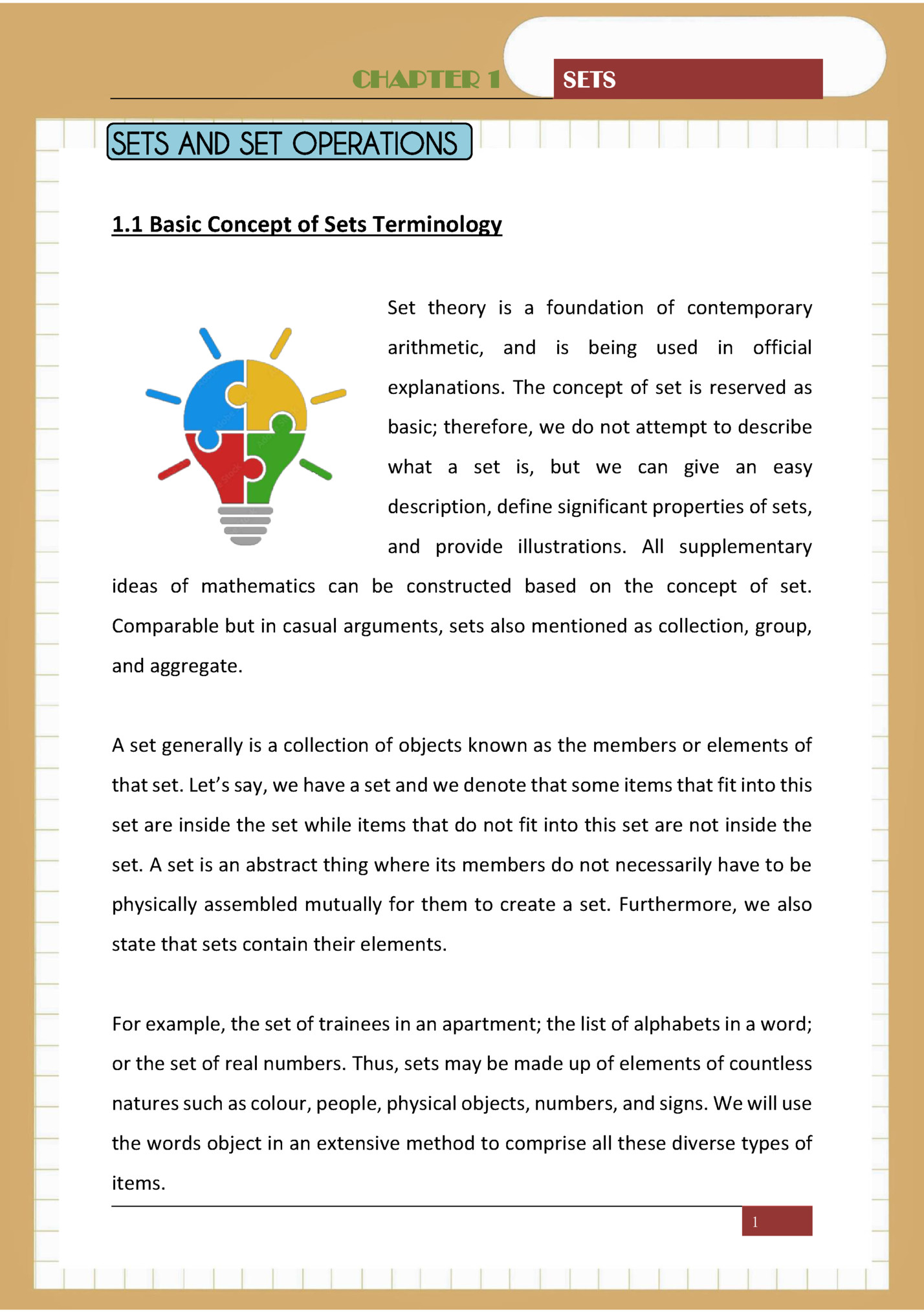
SETS 1.2 Definition of Sets A set is a collection of objects, things and symbols which have a certain common property. Sets can be defined in 3 ways which are using words (description method), by listing elements that separated by commas (roster method), and by combination of words and listing elements (set-builder notation). The notation used for sets is braces, {}. {prime numbers} Description method Read as ‘set of prime number’. {2, 3, 5, …} Roster method 3 dots are used to indicate that elements have been omitted when listing all the elements is impractical. Read as ‘elements of the set are 2, 3, 5 and so on’. {x : x ≥ 1, x is an odd positive integer} Set-builder notation Read as ‘set of all x such that x is an odd positive integer’. 2
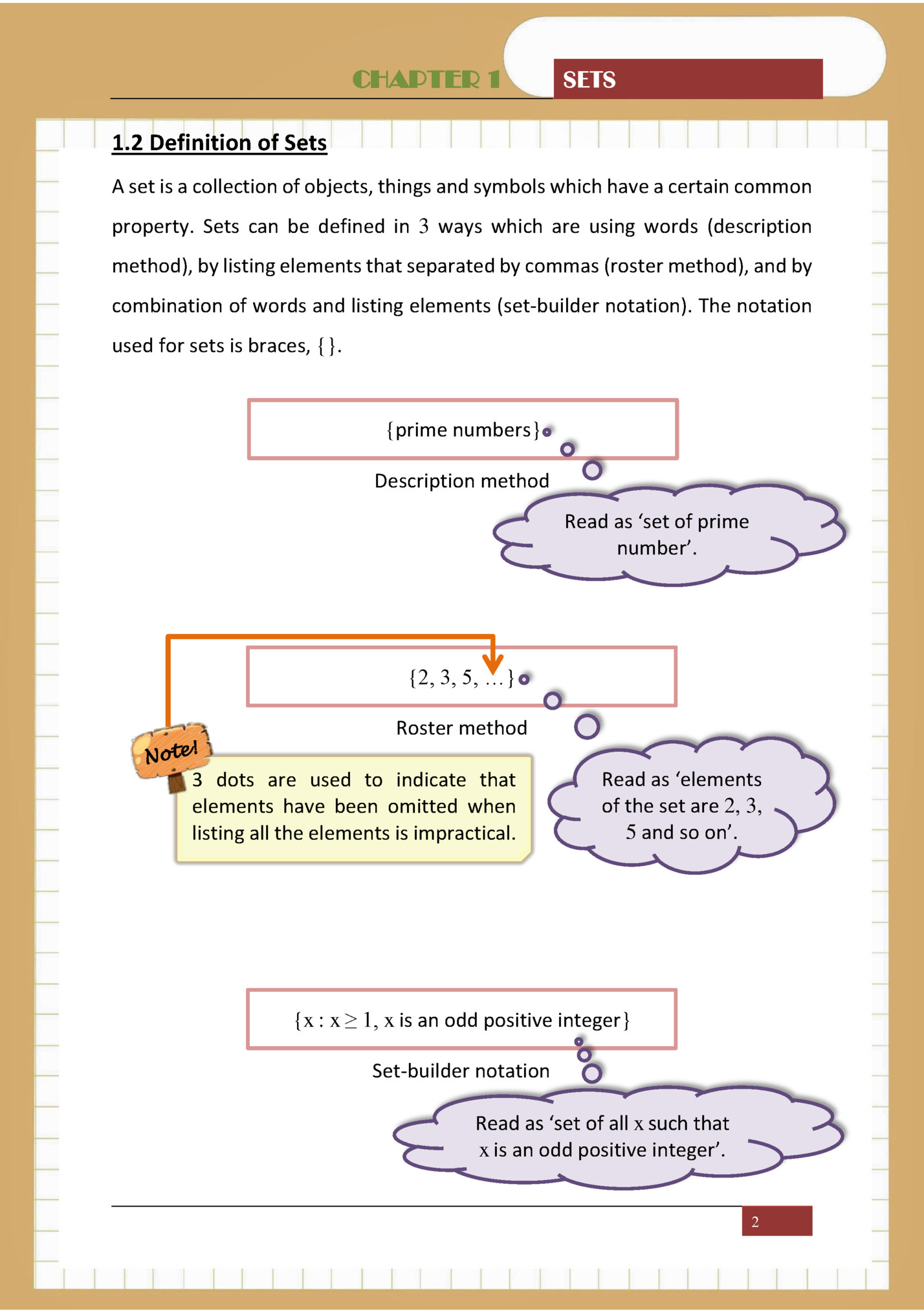
SETS a. Members or Elements The individual objects in a set are called the members or elements of the set. The same elements in a set need not be repeated. elements A = {a, b, c, d, e} Sets are usually denoted by capital letters. Read as ‘members of set A are a, b, c, d and e’. Z = {letters in the word ‘HELLO’} Z = {H, E, L, O} Epsilon, , is used to denote an object ‘is an element of’ or ‘is a member of’ a set. While ∉ is used to denote ‘is not an element of’ or ‘is not a member of’. If A = {5, 6, 7, 8}, then 6 A and 9 ∉ A b. Number of Elements The in a set A is written as n(A). If A = {p, q, r, s}, then n(A) = 4 3
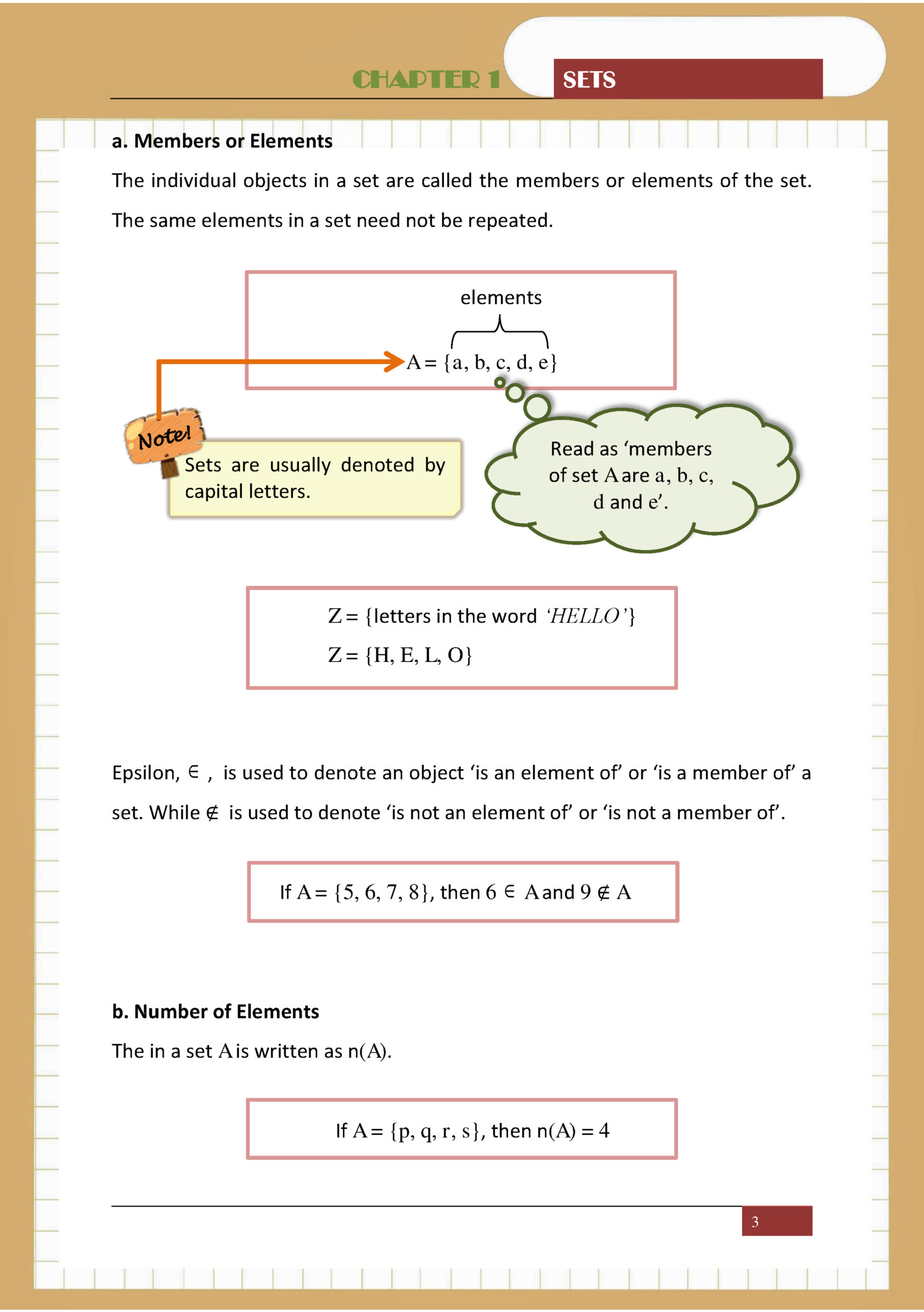
Fleepit Digital © 2021